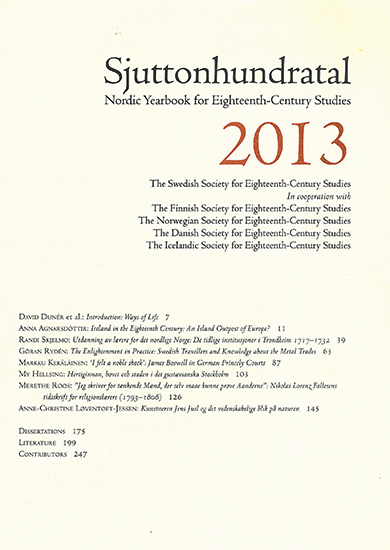Hertiginnan, hovet och staden i det gustavianska Stockholm
DOI:
https://doi.org/10.7557/4.2623Keywords:
Hedvig Elisabeth Charlotta, Gustavian Court, Stockholm, theatre, public sociability, spatiality, social exclusivityAbstract
The Duchess, the Court, and the City in Gustavian Stockholm
This article analyses the everyday urban sociability and the staging of politics of the Swedish duchess Hedwig Elizabeth Charlotte in the years around 1790. The cultural and social life of the Gustavian court has been the focus of much scholarly attention. However, the main aim of these studies has been to examine court life as a reflection of Gustavus III’s personality and political ambitions. This article, however, integrates Gustavian court sociability in a broader European pattern by focusing on the monarch’s sister-in-law. It aims to give a detailed account of social practice through a vast selection of the Duchess’s personal remains: her political journal and letters, informal notes to friends, and household accounts showing the sums she spent on charity. It also takes into account royal theatre box subscription lists as a way to identify the composition of the theatre audience. The claim of this article is that the Swedish royal family maintained their authority through their daily urban presence, such as their walks in the public gardens and main streets of Stockholm, their attendance at weekly balls at the Stock Exchange (Börshuset), or their visits to the royal theatres. Through a carefully ritualized sociability, the court preserved their social exclusivity in their urban encounters.









